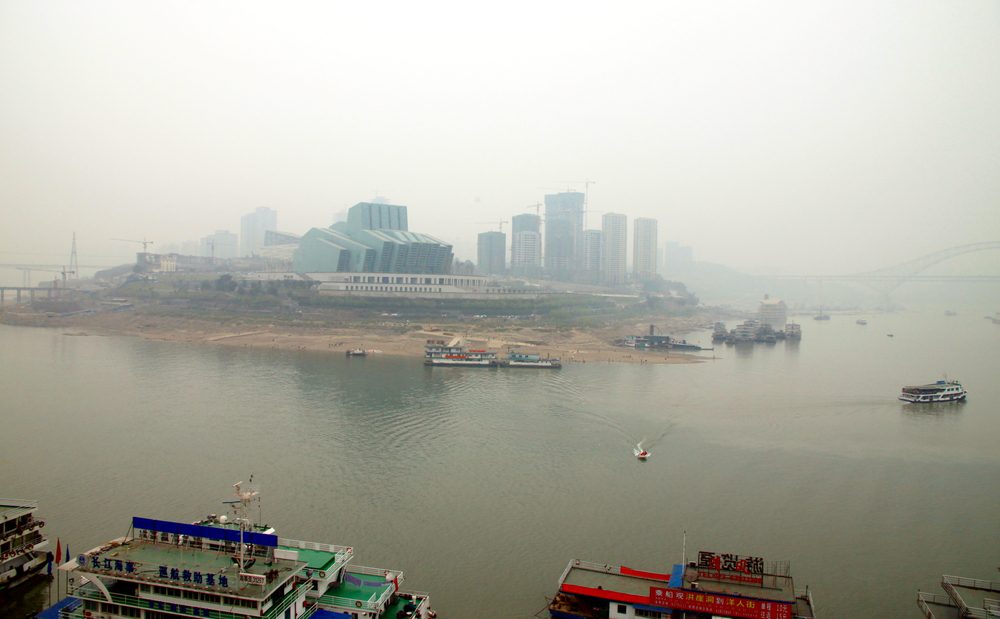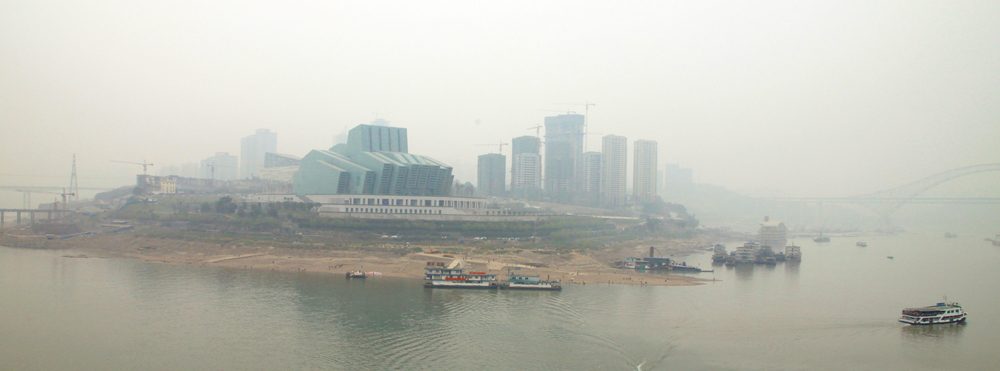China’s environmental crisis

 China, a rapidly growing economy, is more seriously polluted than any society on earth, said a keynote speaker at the two-day international symposium on “China’s Environment Crisis: Is there a Way Out?”
China, a rapidly growing economy, is more seriously polluted than any society on earth, said a keynote speaker at the two-day international symposium on “China’s Environment Crisis: Is there a Way Out?”
The forum, held at Furman University, was presented by the Riley Institute at Furman and the Department of Asian Studies with support from the Luce Initiative on Asian Studies and the Environment, the Department of Political Science, and the David E. Shi Center for Sustainability.
Monday’s keynote speaker was Jennifer Turner, the director of the China Environmental Forum at the Woodrow Wilson Center. She presented an overview of the environmental problems facing China—air pollution, water problems, energy, and the choke points that face resolutions to those problems.
Patricia Adams, executive director of Canada-based Probe International who presented the keynote address Tuesday, said her organization works with Chinese environmental and social activists to help them in their battle to improve the environment.
Without regulations that can be enforced, the rule of law, a free press and free speech, and market discipline, “China’s environment will continue to be misused,” she said. Currently, 19 percent of the country’s groundwater is polluted. Seventy four cities exceed world health organization air pollution safety standards. About a fifth of the country’s arable land is contaminated. Contaminated and toxic food continues as a danger to local citizens and the global citizens who buy the food.
That is important to Chinese citizens because they are the first to be affected by pollution and resource misuse, but the entire global community also is affected.
Stevan Harrell, professor of anthropology, environment and forest science and Chinese at the University of Washington and a member of an earlier panel, said China’s air pollution sometimes reaches Seattle.
The Chinese government has begun to address pollution and citizen protests, but it is not willing to allow the price of electricity and water to increase by forcing companies to follow regulations and meet world health standards. Officials fear public unrest that might be harmful to the Communist party, he and Andrew Mertha, professor of government and director of the China and Asia Pacific Studies Program at Cornell University, said.
“Give power to the people of China and China will thrive, and so too will the rest of the world,” Adams said.
Adams said Three Gorges Dam, a huge hydroelectric program, is an example of the inefficient use of resources, the corruption of government, and the lack of regard to environmental and human issues. Dam construction was delayed for five years but was approved in 1992.
Although the official price tag of the dam was $23 billion, experts estimate the cost at $60 billion, she said, not including the human costs forced by the relocation of residents in the areas flooded. Also, the downstream banks of the Yangtze River have eroded from the release of reservoir water and the riverbed has dropped by 11 meters. The cost of generating the power produced by the dam is four times the government-set cost of electricity. But up to 130 more dams in the area are in the works.
These dams also are causing a 30-fold increase in area earthquake activity, she said, often killing thousands of people.
Mertha talked about other Chinese dams and the protests that have grown up around them. One group of protestors was unsuccessful in halting a dam that forced resident relocations, he said, primarily because the concern was compensation and the local government managed a media blackout. Also, the government labeled protestors a threat to social stability.
Another group in the same province managed to halt construction of a dam. And construction of 13 hydropower stations on the New River was halted although that project has been recently revived.
Mertha said the big difference is the presence of environmental entrepreneurs, activists who come up with solutions; the way the issue is framed— either compensation or the destruction of cultural heritage or biodiversity and the presence or lack of media voices and networking activities.
China is making some headway on the issue of forests, Harrell said. Most people think of pollution when they think of the environment in China. However, the use and abuse of natural resources are just as important.
“China has done a pretty good job of restoring forests,” he said, adding that in 1700 about 26 percent of the country was forested. By 1962, that was down to between 8.1 percent and 11.6 percent. As of 2011, about 20.3 percent of the country’s land was forested.
The government’s goals in restoring forests are environmental protection, securing and improving rural livelihoods and growing the domestic and export forest products industry. The government investment in forests began in 1998 when huge floods along the Yangtze River were attributed to deforestation.
The government provides free trees to rural areas to try to halt or reverse desertification and encourages changing farmland into forested areas. Sometimes that works and sometimes it doesn’t because often the government plants the wrong trees or puts them in unsustainable areas, Harrell said.
Although the government began encouraging a forest products industry around 2006, China produces less timber than it consumes, he said. Therefore, it buys from Siberia, the United States, Canada and poor countries that need the money. It then uses that lumber to export products. China now “exports deforestation. “
But all speakers are encouraged that the environment is part of the conversation, unlike ethnic issues and multiparty democracy. They don’t, however, see the current regime as able to attack many environmental issues. Citizens are increasingly becoming involved and over time may move the government.
For more Riley Institute events, visit rileyinstitute.org
Image courtesy Shutterstock.